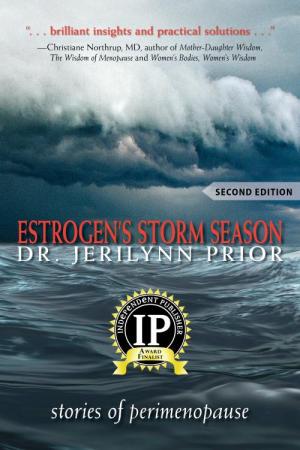I am a 36-year old woman and we have been trying to conceive for a while. I know my fertile window is 3 days before ovulation the day of and after ovulation. Does that mean that you cannot fall pregnant if you engage in sexual activity a week before your next period?
Thank you for your good question.
First, let me reassure you that 8 months is not an abnormally long time to be trying and to not yet become pregnant. That is especially so if this is your first pregnancy. It is very important that you inform yourself and hold tight to your belief that you and your partner are healthy and will eventually make a baby. What I will do is try to help you better understand the process and how to interpret your own menstrual cycle and ovulation.
You are expressing a very common desire for good information about fertility and menstrual cycles. We hear similar questions from women who volunteered for our Menstruation and Ovulation Study. This is a large study of women's menstrual cycles to find out how frequently a cycle is ovulatory (releases an egg) and how to detect ovulation.
Although you say, "I ovulated on day 16," I'm wondering what information you used to decide that? If you used stretchy, clear egg white type mucus from the cervix, then you may or may not have actually released an egg. For example, many women think that peak stretchy mucus (in other words, stretchy mucus that makes a clear thread 3-5 cm [1-2 inches] long) is a reliable sign of ovulation. Also, teachers of the many fertility awareness methods commonly say: "peak mucus means ovulation." However, the maximally stretchy mucus simply means that your estrogen levels are very high.
When estrogen reaches levels typical of the estrogen peak in the middle of the cycle, the glands in the cervix (opening into the uterus) make lots of clear, stretchy mucus. What most people don't know, is that high levels of estrogen, like the usual midcycle estrogen peak, can occur and not be followed by ovulation. Therefore, usually the estrogen peak and "peak mucus" are followed by ovulation, but not always.

Figure 1: menstrual cycle hormone diagram with stretchy mucus
To finish our discussion of mucus changes and fertility—after you ovulate and progesterone levels have become high, progesterone stops the cervix from making that stretchy mucus. The actions of high normal (post-ovulatory) progesterone levels produce the “dry days” when sex will not cause pregnancy. I've observed that sometimes, even in ovulatory cycles, some minimal stretchy mucus may occur in the week before flow. That suggests to me that either estrogen is higher than usual, progesterone is lower, or both. If an estrogen peak happens to occur at the time of the period, the menstrual flow looks like currant jelly—red with a clear stretchy character to it.
You could well be right that you ovulated on Day 16. If you did, and that cycle was 28 days long, the length of the high progesterone time (luteal phase) is probably too short for implantation of the fertilized egg. The high progesterone levels need to be present, ideally, for 14 days for optimal fertility. For example, if you had peak stretchy mucus on Day 16, and the last day before your period started was Day 28, you would have a luteal phase length shorter than 12 days. The reason is that the process from the estrogen peak to the luteinizing hormone (LH) peak and then to egg release takes a few days. After the estrogen peak, it takes about a day before the peak of LH (that can be tested by the fertility test kits you can buy) that triggers ovulation. And, it takes about a day after that LH peak before the egg is actually released and progesterone levels start to rise.
So you could be having what is called a "short luteal phase" cycle. That simply means a kind of ovulatory cycle that doesn't give enough days of high progesterone to allow the uterine lining (endometrium) to mature. The endometrium has to have many days of exposure to progesterone to develop the glands that allow a fertilized egg to take hold and grow normally. From the LH peak until the next flow needs to be at least 12 days for fertility.
If you are using basal temperature to decide you've ovulated the luteal length by temperature shift needs to be 10 or more days for fertility. The reason the luteal phase length by the temperature method is shorter is because it takes 2-3 days of increased progesterone after the LH peak before the temperature shift occurs and temperature rises significantly.
What causes regular cycles to have no release of an egg (anovulation) or release of an egg with a luteal phase that is too short? Lots of things! Including, for younger women, the ordinary stresses of most women's lives. Disturbances of ovulation are related to not eating as many calories as you are burning, worrying that what you eat may make you gain weight (called cognitive dietary restraint), being sick with any serious disease, or any of the above plus too much exercise or exercise you've not gotten used to. It also takes about 12 years after the first period before ovulation occurs during most cycles with a normal luteal phase length. It is also likely that having taken hormonal contraceptives like the Pill for many years, or starting the Pill at a young age, may delay the development of normally ovulatory cycles—no longitudinal studies, however, have asked that question, or have proven that. The good news is that once ovulation is established, and the complex coordination between the brain, the pituitary and the ovary is mature, ovulation is pretty robust. It is sturdy and not often disturbed, that is, until perimenopause (also see the article Perimenopause, the ovary's grand finale) when short luteal phase lengths again, like in the teen years, become common. What is confusing is that regular cycles of normal cycle lengths don't tell us about the length of the luteal phase or even if we've ovulated.

Figure 2: bar graph of cycle length with differing luteal phase lengths
Now to your specific questions about when to have sex to optimally get pregnant. In general, the days of stretchy mucus before ovulation are the best days. The reason that before, rather than after ovulation, is optimal for sex to cause pregnancy is that sperm fertilize the egg as it is making its way down the fallopian tube to the uterus. So the sperm need to be in the tube, ready and waiting! Any day with stretchy cervical mucus is a good day to try! That being said, I was rather uninformed when I tried for my first pregnancy, I waited until the day my temperature went up, and still did get pregnant!
Here's what I think would help you right now. I'd suggest that you print off the Menstrual Cycle Diary and record it regularly every evening. Put a dot in the "Interest in Sex" box if you have intercourse on that day. I'd also start keeping your first morning (called "basal") temperature. You don't have to write those temperatures onto a graph—it is more accurate, we've found, to write the temperature down in the box for it at the bottom of the Diary.
If you find, from keeping and analyzing your first morning temperature, that you are having luteal phase lengths that are too short, don't give up! First of all, cycles are very variable, so that your next cycle may be normally ovulatory. This variability occurs even in the same woman from one month to the next. Secondly, if your cycles continue to have short luteal phases, I have found, as I described in Chapter 8 in my book for perimenopausal women called Estrogen's Storm Season, that taking bio-identical progesterone for 14 days late in the cycle, often assists women to become pregnant and to carry the pregnancy to a healthy birth. The general instructions about cycle days 14-27 for taking Cyclic Progesterone Therapy must be modified when using cyclic progesterone for fertility.

Figure 3: cyclic progesterone for fertility
For fertility despite short luteal phase cycles, start taking progesterone after the stretchy mucus has started to decrease, rather than starting on Day 14. The reason is that you want to catch any ovulation, be it on cycle day 11 or cycle day 18. And, most importantly, high dose progesterone could interfere with the release of the egg if you took it before the LH peak. Also, be sure to not use medroxyprogesterone instead of oral micronized progesterone when working for fertility. Because medroxyprogesterone is not the same as our own natural progesterone, it could cause a birth defect.
I have every faith that you will get pregnant!
I hope this is helpful for you.





